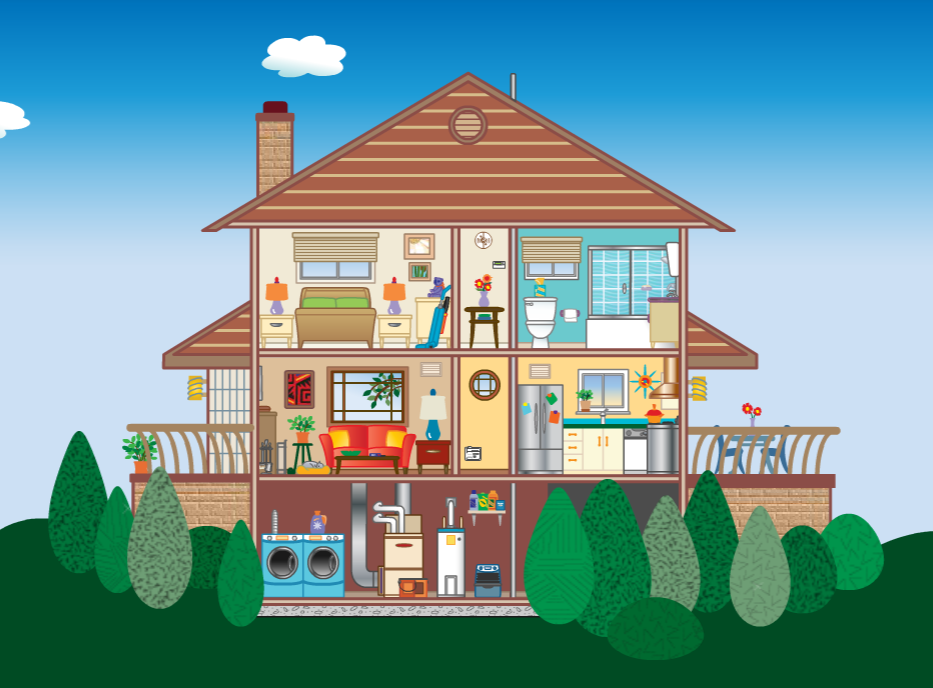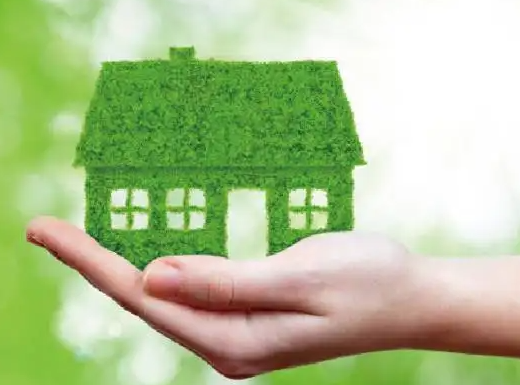Green Building Projects
-

Volatile Organic Compounds’ Impact on Indoor Air Quality
Introduction Volatile organic compounds (VOCs) are emitted as gases from certain solids or liquids. VOCs include a variety of chemicals, some of which may have short- and long-term adverse health effects. Concentrations of many VOCs are consistently higher indoors (up to ten times higher) than ...Read more -

Primary Causes of Indoor Air Problems – Secondhand Smoke and Smoke-free Homes
What is Secondhand Smoke? Secondhand smoke is a mixture of the smoke given off by the burning of tobacco products, such as cigarettes, cigars or pipes and the smoke exhaled by smokers. Secondhand smoke is also called environmental tobacco smoke (ETS). Exposure to secondhand smoke is sometimes cal...Read more -

Primary Causes of Indoor Air Problems
Indoor pollution sources that release gases or particles into the air are the primary cause of indoor air quality problems. Inadequate ventilation can increase indoor pollutant levels by not bringing in enough outdoor air to dilute emissions from indoor sources and by not carrying indoor air po...Read more -

Indoor Air Pollution and Health
Indoor Air Quality (IAQ) refers to the air quality within and around buildings and structures, especially as it relates to the health and comfort of building occupants. Understanding and controlling common pollutants indoors can help reduce your risk of indoor health concerns. Health effects fro...Read more -

How — and when — to check indoor air quality in your home
Whether you are working remotely, home-schooling or simply hunkering down as the weather gets cooler, spending more time in your home means you’ve had a chance to get up close and personal with all of its quirks. And that may have you wondering, “What is that smell?” or, “Why do I start coughi...Read more -

What is Indoor Air Pollution?
Indoor air pollution is the contamination of the indoor air caused by pollutants and sources like Carbon Monoxide, Particulate Matter, Volatile Organic Compounds, Radon, Mould and Ozone. While outdoor air pollution has captured the attention of millions, the worst air quality that ...Read more -

Advise the public and professionals
Improving indoor air quality is not the responsibility of individuals, one industry, one profession or one government department. We must work together to make safe air for children a reality. Below is an extract of the recommendations made by the Indoor Air Quality Working Party from pag...Read more -
 Poor indoor air quality at home is linked to health effects in people of all ages. Associated child related health effects include breathing problems, chest infections, low birth weight, pre-term birth, wheeze, allergies, eczema, skin problems, hyperactivity, inattention, difficulty slee...Read more
Poor indoor air quality at home is linked to health effects in people of all ages. Associated child related health effects include breathing problems, chest infections, low birth weight, pre-term birth, wheeze, allergies, eczema, skin problems, hyperactivity, inattention, difficulty slee...Read more -

Improve the indoor air in your home
Poor indoor air quality at home is linked to health effects in people of all ages. Associated child related health effects include breathing problems, chest infections, low birth weight, pre-term birth, wheeze, allergies, eczema, skin problems, hyperactivity, inattention, difficulty sleep...Read more -

We must work together to make safe air for children
Improving indoor air quality is not the responsibility of individuals, one industry, one profession or one government department. We must work together to make safe air for children a reality. Below is an extract of the recommendations made by the Indoor Air Quality Working Party from pag...Read more -

Benefits of Mitigation of IAQ Problems
Health Effects Symptoms related to poor IAQ are varied depending on the type of contaminant. They can easily be mistaken for symptoms of other illnesses such as allergies, stress, colds, and influenza. The usual clue is that people feel ill while inside the building, and the symptoms go away sho...Read more -

Sources of Indoor Air Pollutants
The relative importance of any single source depends on how much of a given pollutant it emits, how hazardous those emissions are, occupant proximity to the emission source, and the ability of the ventilation system (i.e., general or local) to remove the contaminant. In some cases, factor...Read more
